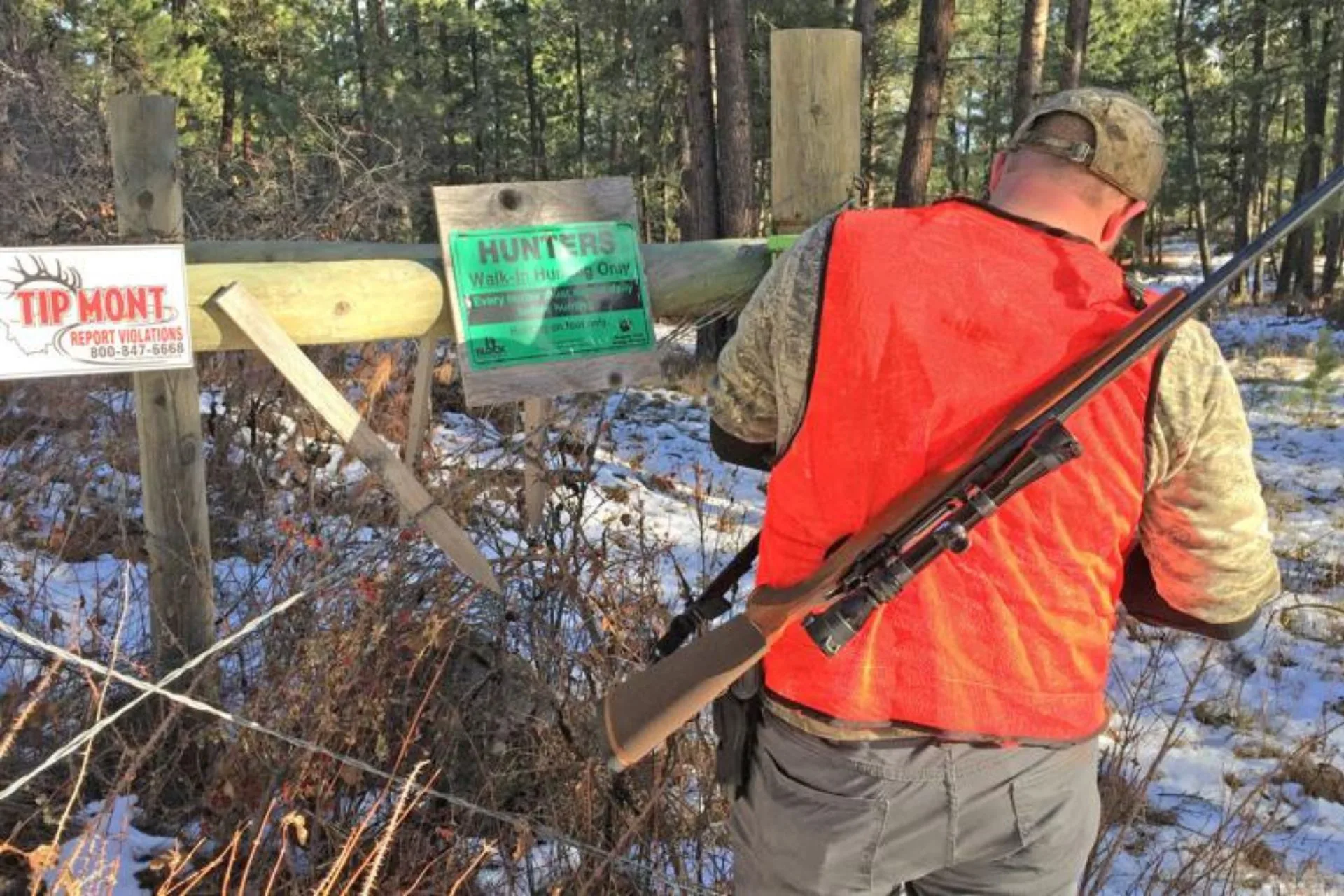BRETT FRENCH | bfrench@billingsgazette.com
Montana’s popular Block Management Program, which this year enrolled about 1,200 landowners who will provide hunters free public access to roughly 6.8 million acres of private land, is facing challenges overseeing the expansive system.
In 2025 the program will pay out about $12.3 million to landowners across the state with another $3 million going to operations.
“So (Montana Fish, Wildlife & Parks) has done an amazing job of building a great program,” Lena Havron, FWP’s chief financial officer, told an Oct. 8 meeting of the Private Land/Public Wildlife Advisory Committee. “But as you can see, our operations costs over time have not increased nearly by the value of additional contracts.
“We can’t really grow without additional operations,” she added.
Block Management crunch
As a result, regional access managers, who oversee the Block Management Program, are also dealing with the Public Access Land Agreements, or PALA, “in addition to 10 other programs,” said Jason Kool, FWP’s landowner sportsmen coordinator.
“So it’s just a balancing act for staff and what we can and can’t do and hours in a week and willing landowners.”
State parks are also “struggling a bit” as fewer people are now stepping forward to volunteer, said Renee Lemon, Parks and Outdoor Recreation Division administrator.
“We’ve had situations in some parks where they’ve gotten by on volunteers for many years, and now suddenly volunteerism is being reduced, and we don’t have the staff and capacity to keep up with operations.”
Staff, budget insights
In a wide-ranging discussion, the meeting provided deeper insight into the state game agency’s often opaque budgeting and staffing decisions at a time that outdoor activities the agency manages – from state parks to hunting and fishing – have seen substantial growth following the pandemic. With more people out and about, complaints about crowding have also climbed.
The meeting also highlighted the uniqueness of FWP as an agency.
Although Montana FWP is solely funded by license dollars and federal payments from taxes on hunting and fishing gear, the agency needs authority from the Legislature to spend its own cash and to approve hiring of additional staff.
To meet departmental needs, FWP requested funding for 30 full-time employees this past legislative session, Havron said, and “it backfired on us.” The request was removed through the governor’s budget process, she said, “prior to anybody seeing it” due to a “glitch.”
However, FWP was allowed to hire seven FTEs to work on hunter education, and other “customer service stuff.”
The agency also saw its Private Land Fishing Access (PLFA) program sit idle after it was moved from the Fisheries Division to Parks and Outdoor Recreation during the agency’s last reorganization. Once there, the PLFA program went dark because the administrator “remodeled” the position, removing the person from overseeing the program, Havron said.
Behind the budgeting
Budget challenges have also affected FWP’s Public Access Land Agreements, or PALA. Under the program, FWP pays landowners up to $15,000 annually to provide access to public lands via private roads, trails or other lands.
Ed Beall, chair of the Private Land/Public Wildlife committee, said the PALA program was just gaining steam when FWP applied the brakes. That was because only $200,000 was left in the fund, Kool said.
Havron explained that even though a PALA agreement may be for 10 years, funding is only allocated in FWP’s budget for two years. That’s the result of a 2013 legislative committee’s criticism of FWP obligating all of the payment for its agreements, some of which were for 30 years, in the 2013 budget.
“So we walked into that session with five sessions worth of funding on the books, because we obligated the entire amount in those first years, and we almost lost all of our upland game bird, all of our migratory bird, all of our future fisheries. We almost lost all of that,” Havron explained.
“So we decided as an agency we’re going to take a little bit more of a gambler’s approach, and we were going to request what we thought we might be able to spend in two years, and then just always have those obligations in mind to make sure that we account for that in our next request.
“It’s a different approach.”
FWP Chief of Staff Quentin Kujala said as a result of the 2013 approach, the agency “suffered a negative consequence” with lawmakers.
Paradoxically, Beall noted it would be less work on the administrative side to have multi-year agreements to oversee.
Kujala agreed. “There’s a certainty in place, certainty for planning on both sides of the partnership,” he said.
Beall suggested the Legislature might be more amenable to funding knowing that there are agreements that exist, rather than ones that may exist in the future.
“That’s a reasonable thought to have but that’s not a certainty to realize,” Kujala cautioned. “I only mean to say you might hope that’s how it proceeds, but I think we have to be careful being sure that’s how it would proceed in those conversations.”
Looking forward
Given the budgeting challenges, Beall asked FWP staff what the goal is for the PALA program going forward.
“We’re going to be bringing you a set of recommendations on where we think we need to make improvements, including to staff capacity and operations,” Lemon said.
Those recommendations could be available by the January PLPW meeting.
“It might not be a quick fix,” Havron said. “We might not be able to fix this until fiscal year ‘28 if we’re successful across the street,” meaning at the Legislature.
The goal is to find a balance within the agency, she said.
“We can’t put everything forward that gets asked for from every program. We’re going to try our best to get everybody everything they need. But at the end of the day, it doesn’t usually always happen.”
Kujala told the group the agency’s priorities as of right now are on maintenance, parks and outdoor recreation and “conflict response” with access part of the mix.
Tech instead of staff
Havron said she’s hopeful that FWP can invest in technology to lighten the existing staff’s workload before adding more staff.
“I feel like if we can’t find solutions through technology, we’re going to have to have a resource package in front of the governor’s office to request additional resources for the program,” she said.
One complicating factor is that federal contributions to FWP’s coffers from excise fees on fishing and hunting gear have declined.



